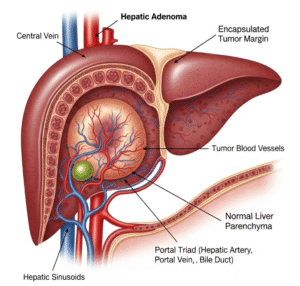Overview
Worms, or parasitic worm infections, are caused by helminths—a group of parasitic organisms that live in the human body, often in the intestines. These infections are common in regions with poor sanitation and hygiene and can cause a wide range of symptoms, from mild digestive discomfort to severe organ damage. Treatment is usually effective with antiparasitic medications, but prevention through hygiene and public health measures is key to controlling transmission.
What is a Worm Infection?
Worm infections in humans are caused by parasitic helminths, which are classified into three main types:
- Roundworms (Nematodes) – e.g., Ascaris, hookworms, whipworms
- Tapeworms (Cestodes) – e.g., Taenia species
- Flukes (Trematodes) – e.g., liver flukes, blood flukes (schistosomes)
These parasites invade the body through contaminated food, water, soil, or insect bites and can reside in various organs, especially the intestines, liver, and lungs. Some cause chronic infections and malnutrition, particularly in children.
Symptoms
Symptoms vary by worm type, load, and location in the body, but commonly include:
- Abdominal pain and bloating
- Diarrhea or constipation
- Nausea or vomiting
- Itching around the anus (especially with pinworms)
- Unexplained weight loss
- Fatigue and weakness
- Visible worms in stool
- Cough or respiratory symptoms (if the worms migrate through the lungs)
- Nutritional deficiencies or anemia (especially with hookworms)
In severe cases, worms can block the intestines or invade organs like the liver or brain.
Causes
Worm infections are typically caused by:
- Ingesting contaminated food or water
- Walking barefoot on contaminated soil (hookworm larvae penetrate skin)
- Poor hygiene or handwashing practices
- Eating undercooked or raw meat or fish (tapeworms, flukes)
- Contact with infected animals or feces
- Travel to endemic areas with inadequate sanitation
Children are especially vulnerable due to playing in contaminated environments.
Risk Factors
People at higher risk of contracting worm infections include:
- Residents of or travelers to tropical or developing regions
- Children, especially those in school or daycare settings
- People with poor access to clean water or sanitation
- Individuals who consume raw or undercooked meat or seafood
- Agricultural or animal workers
- Immunocompromised individuals (may experience more severe infections)
Complications
If left untreated, parasitic worm infections can lead to:
- Severe malnutrition and growth delays in children
- Anemia, especially with hookworms
- Intestinal obstruction
- Liver, brain, or lung involvement (depending on the worm type)
- Seizures or neurological issues (in neurocysticercosis)
- Organ damage from migrating larvae (e.g., schistosomiasis, echinococcosis)
- Secondary bacterial infections
Chronic infections can also impair cognitive development and productivity in affected populations.
Prevention
Preventing worm infections relies on good hygiene and public health practices, including:
- Washing hands regularly, especially before eating or after using the toilet
- Thoroughly cooking meat, fish, and vegetables
- Avoiding untreated water in endemic regions
- Wearing shoes outdoors, especially in soil-rich areas
- Regular deworming programs, especially in schools or high-risk regions
- Safe sanitation practices (e.g., use of latrines, proper sewage disposal)
- Health education on transmission and prevention
Treatment Options in Korea
South Korea offers modern, efficient diagnosis and treatment for parasitic worm infections. Most cases are easily managed with medication, and treatment is often outpatient-based:
- Stool tests or serologic tests for accurate diagnosis
- Antiparasitic medications, such as:
- Albendazole or mebendazole (for roundworms, hookworms, pinworms)
- Praziquantel (for flukes and tapeworms)
- Ivermectin (for certain strongyloides or filarial infections)
- Nutritional support for anemia or growth issues
- Follow-up testing to ensure full eradication
- Public health reporting and tracing in some cases
Specialized care is available at institutions such as Seoul National University Hospital, Asan Medical Center, and Korea Centers for Disease Control, which provide both pediatric and adult parasitology expertise. Education and hygiene outreach also play an essential role in ongoing prevention.













